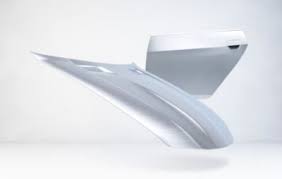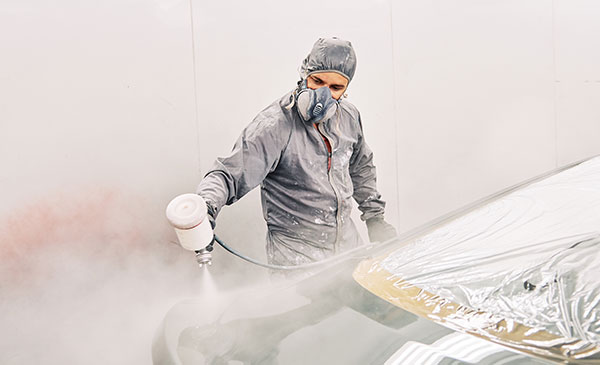Our Products/ Chemical/ / Zinc Phosphate Coatings
Zinc Phosphate Coatings
| Product Inquiry |
Excellent Corrosion Protection and Paint Adhesion
The zinc phosphate conversion coating process used today converts the metal surface into a non-metallic, polycrystalline coating containing iron, manganese, nickel, and zinc phosphates. This coating provides an excellent base for paint adhesion and corrosion protection. As zinc phosphate conversion coatings incorporate additional metal ions into the coating to increase the alkaline resistance, it makes an excellent paint base offering superior adhesion and durability.
The zinc phosphate pretreatment process may be applied by either spray or immersion and can be used on a wide variety of substrates including bare steel, hot-dip-galvanized and electrogalvanized steels, zinc-nickel alloy, and aluminum. This pretreatment process typically incorporates three to four chemical stages.
The first step in the zinc phosphating process is cleaning the incoming surfaces of all contamination. This ensures the proper deposition of the zinc phosphate coating. The second step is the treatment of the cleaned surface with a surface conditioner. The conditioner provides nucleation sites for the zinc phosphate, thus promoting a dense microcrystalline zinc phosphate coating.
After conditioning, the surface enters either a spray or immersion zinc phosphate bath. The zinc phosphate bath changes the morphology and chemistry of the surface by depositing a dense polycrystalline zinc phosphate conversion coating. Depending on the metal substrate being processed, the zinc phosphate coating may contain iron, manganese, nickel, and zinc phosphates. Incorporating these additional metal ions into the zinc phosphate coating changes the chemical nature of the surface, increasing alkaline resistance and paint durability.
The final step in the process, which is optional, is the application of a post-treatment or sealer. The post-treatment/sealer chemistry reacts with the zinc phosphate coating, as well as any uncoated substrate, reducing the porosity of the surface and increases its corrosion resistance.
Once the zinc phosphate conversion coating has been successfully applied to the metal surface, the coating provides an excellent base for powder paint, electrocoat, and water- or solvent-based liquid paints. The final zinc phosphate coating and paint application creates a finished surface with excellent adhesion and corrosion resistance.
The use of aluminum is increasing, especially in automotive manufacturing, as manufacturers continue to mix metals to reduce the weight of vehicles while maintaining global safety standards. This increase of aluminum through the zinc phosphate pretreatment process presents some unique challenges. For the pre-treatment of these lightweight and mixed metal substrates, Henkel has developed our innovative Zinc Phosphate 2-Step Process.
The 2-step process employs the same cleaning and surface conditioning steps described above, however, the conversion coatings change depending on the substrate being processed. In the case of hot-dipped, electrogalvanized or zinc-nickel (Zi/Ni) alloyed steel, the traditional zinc phosphate coating is deposited on the surface by spray or immersion. In the case of aluminum, the zinc phosphate spray or immersion bath chemistry is modified to reduce the etching of the surface to prevent the zinc phosphate coating from depositing on the aluminum surface. The conversion coating deposited on the aluminum costs from the passivation or sealer stage. This stage deposits a cutting-edge thin-film zirconium conversion coating on the aluminum surface while acting as a post-treatment/sealer for the other substrates.
At Henkel, we supply a range of BONDERITE® zinc phosphate products, including traditional tri-cationic, 2-Step, and nickel-free conversion coatings - all specially formulated to promote adhesion and corrosion protection on various metal substrates prior to paint application.
Conditioners for Zinc Phosphate
Surface conditioners directly precede the zinc phosphate solution and help promote a dense, uniform zinc phosphate crystalline structure. By changing some of the surface conditioner operating parameters, such as concentration, pH, or time, the final zinc phosphate conversion coating properties will be affected. For example, by using a higher concentration of the conditioner, finer zinc phosphate crystals are allowed to form, thereby reducing the total coating weight. To ensure optimal adhesion for zinc phosphate conversion coatings, it is necessary to prepare the surface prior to treatment. This preparation removes oil and grease by using aqueous or solvent-based cleaning solutions to create the ideal bonding surface for subsequent treatment.
Henkel supplies a range of BONDERITE® surface conditioners (either titanium- or zinc-based) specially formulated to prepare metallic surfaces for zinc phosphate coating, thereby helping to ensure a tough, long-lasting, and high-quality finish.
Post Treatment and Sealers
Further treatment following zinc phosphate coating, especially in the case of aluminum, has been proven to have a significant beneficial effect on long-term performance. Post-treatmentand sealers will reduce the porosity of the surface, thereby improving its overall long-term adhesion and corrosion resistance.
Henkel offers a broad portfolio of specially formulated BONDERITE® post-treatments which further enhance the performance of the zinc phosphate conversion coating.
Benefits of Zinc Phosphate Treatment
The zinc phosphate coating process, applied by spray or immersion, is a trusted pre-treatment designed to prepare metal surfaces for painting by providing an excellent foundation that promotes paint adhesion and corrosion protection.
Key benefits of the zinc phosphate coating process include:
-
Suitable for use with a wide range of metals, bare, hot-dipped or electrogalvanized steels, zinc-nickel alloys, and aluminum
-
Compatible with spray and immersion applications
-
Generates a uniform dense polycrystalline coating serving as an excellent foundation for subsequent paint applications
-
Compatible with a wide range of paint applications; electrocoat, powder coating, solvent-based, and water-based paint coatings
-
Automatic control
-
Surface conditioner products are available for use with a wide range of water types










